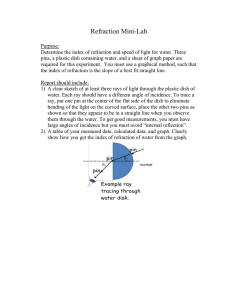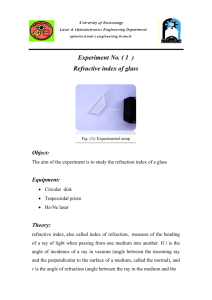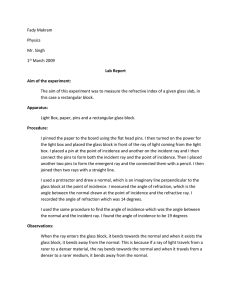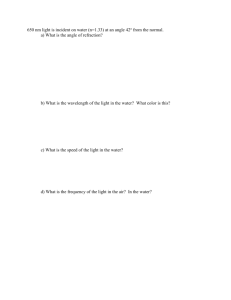EXPERIMENT-01 REFRACTION THROUGH GLASS SLAB
advertisement
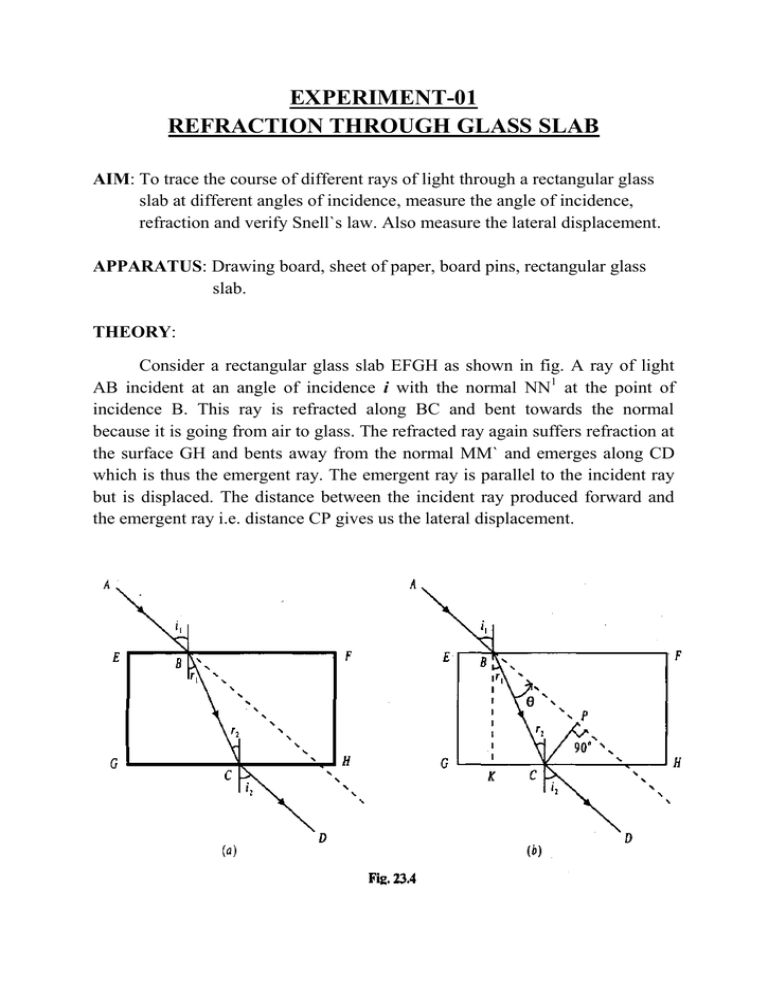
EXPERIMENT-01 REFRACTION THROUGH GLASS SLAB AIM: To trace the course of different rays of light through a rectangular glass slab at different angles of incidence, measure the angle of incidence, refraction and verify Snell`s law. Also measure the lateral displacement. APPARATUS: Drawing board, sheet of paper, board pins, rectangular glass slab. THEORY: Consider a rectangular glass slab EFGH as shown in fig. A ray of light AB incident at an angle of incidence i with the normal NN1 at the point of incidence B. This ray is refracted along BC and bent towards the normal because it is going from air to glass. The refracted ray again suffers refraction at the surface GH and bents away from the normal MM` and emerges along CD which is thus the emergent ray. The emergent ray is parallel to the incident ray but is displaced. The distance between the incident ray produced forward and the emergent ray i.e. distance CP gives us the lateral displacement. PROCEDURE: a) Fix a sheet of white paper on the drawing board with the help of drawing pins at the four corners of the sheet. b) Place a glass slab at the centre of the paper and mark its boundary EFGH with fine pencil. c) Remove the glass slab. Draw any line AB making an angle of 40 0 with the normal at the point B, the middle point of EF approximately. d) Put the glass slab back in position on the boundary line. Fix two pins P 1 and P2 vertically on the line AB at least 5cm apart- and one pin close to the slab. e) Look for the image of these pins in the slab from the opposite side GH and fix two pins P3 and P4 so that they are in the line with the image of P1 and P2 as seen through the slab and at least 5cm apart. f) Join the pricks of P3 and P4 to obtain the emergent ray. Draw a normal to GH at the point C. join BC to get the refracted ray. g) Measure the angle of incidence and angle of refraction. Produce AB forward and draw a perpendicular from C on AB produced to meet it at P. Then the lateral displacement = CP. h) Repeat the experiment with different angles of incidence 500and 600. OBSERVATION TABLE: S.N Angle of Angle of incidence, i refraction, r 1. 400 2. 500 3. 600 GRAPH: Plot graph Sini Vs Sinr. Sin i Sin r μ= Sin i / Sinr Lateral Displacement CONCLUSION: It is clear from the observation table that the ratio of Sini and Sinr is constant. Hence Snell`s is law verified. VIVA-VOCE: a) b) c) d) e) f) g) What do you mean by refraction? What is the angle of refraction when the angle of incidence is zero? What is optical density? Does a parallel side glass slab produce any deviation in the incident light? Can angle of refraction be greater than the angle of incidence? Is the refractive index of water w.r.t. glass less or more than 1? What are the factors on which the lateral displacement produced by a glass slab depends?


